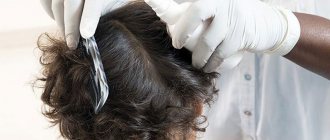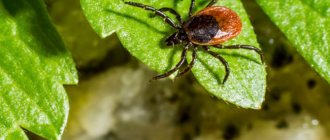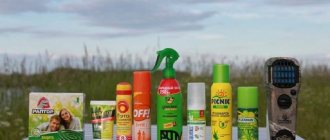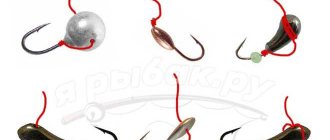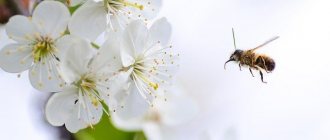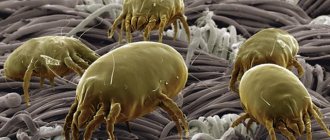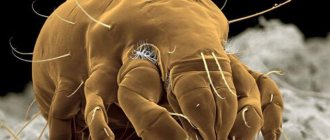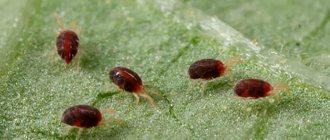Very often people call us, clearly in order, under the guise of potential clients, to extract information from us about how to properly treat an area against ticks. Moreover, from the conversation it is clearly clear that the person is not going to order processing from us, at the same time he does not know how and with what to carry it out correctly, and is afraid that we will expose him as an enemy spy and will not give him any of our professional secrets.
In fact, we do not hide anything from our experience in treating areas for ticks from anyone and can talk about it. Yes, there are a lot of nuances and little things in this procedure, which in their entirety can and do affect the effectiveness of baiting parasites. And all these nuances are almost impossible to tell either over the phone or even in a very detailed article. At a minimum, many of them follow disinfectants subconsciously, and do many things correctly without even thinking about it, simply because over many years of experience these actions have become automatic.
However, now we will tell you in as much detail as possible how to poison ticks in your area. We will tell you about the specifics of their destruction on the lawn near the house, on the garden plot among trees and beds, on public spaces overgrown with grass. Moreover, we will present all this in the form of instructions, in the “take it and do it” format. And you will see how it is done correctly and decide whether to poison the ticks yourself, or order professional treatment from specialists.
Disinfector on the treated area.
So, let's go. Where do you start treating an area for ticks?
Folk methods of struggle
If you want to do without chemicals completely, then it is better to use proven folk remedies. Experienced summer residents recommend the following:
- Irrigation of the area with solutions of essential oils. In particular, rosemary and mint. It turns out that the tick does not tolerate these odors. It is enough to add 5-10 drops of oil to water and spray it on garden crops.
- Citrus juice. It also works well as a bloodsucker remedy. Moreover, you can use both fresh juice and aromatic oils of orange, tangerine, and lemon for irrigation.
- Boric acid or soda. These products need to be sprinkled in places where ticks accumulate to get rid of them.
- Infusion of wormwood. Here you need to take 2 kg of chopped grass and pour moderately hot water (10 liters) for two days. After this, the infusion is boiled for half an hour. All that remains is to bring the decoction again with cold water to a volume of 10 liters. The finished product is diluted with clean water in a ratio of 1: 2 and the area is sprayed. Using the same principle, you can prepare infusions of geranium or sage. They also repel ticks.
- Garlic infusion. To prepare it, add two liters of water to four heads of garlic. Infuse the solution for 5 days in a dark and cool place. Before irrigating the area, the product is diluted with water in a 1:1 ratio.
- Cyclamen roots. An infusion is prepared from them according to this recipe - 100 grams of tubers are poured into 1 liter of boiling water. Now cook the roots until they are completely cooked until they soften. The finished product is cooled and strained. The area is sprayed with the decoction.
- You can also plant natural insecticides around the perimeter. These are chamomile, wild rosemary, tansy, bird cherry. They repel the bloodsucker and prevent it from entering the area.
Advice: in order to protect the territory as much as possible from tick invasion, it is advisable to team up with your neighbors and carry out simultaneous treatment of two or more areas. It is advisable to take the family to the dacha no earlier than 4-6 days after baiting the insect.
Interesting: Wasp nest: instructions for getting rid of it
Folk personal protective equipment
Many residents of summer cottages, especially those located near forest plantings, also use individual methods of protection - applying non-chemical natural substances or their solution to clothes or skin, which are prepared from plants that repel ticks.
The following substances can be used
- essential oils (citronella, fir oil, etc.);
- spraying clothes with formic alcohol (one of the ancient methods of protecting experienced taiga tourists) is also a good remedy for “bloodsuckers”;
- applying Vietnamese anti-tick balm to the skin.
Anti-tick sprayers
Backpack sprayer "Titan"
The Titan backpack sprayer is suitable for treating large areas of land with insecticidal and pesticide preparations. The convenient and voluminous sprayer is made in a black and light green color. It can be successfully used for processing greenhouse crops, wooded areas and landscaping areas. The sprayer was created by the Polish company Marolex and has the following advantages:
- good capacity;
- safe materials with high chemical resistance;
- ease of use;
- simplicity of design;
The presence of seals on the telescopic rod that prevent it from becoming contaminated with sand and soil. Titan sprayers are available for sale in several variations of working tank volume: 12 l, 16 l and 20 l.
Price: ₽ 5,200
Pump sprayer Park
The Park reusable pump sprayer is designed for the agricultural industry and for treating areas against ticks. The volume of the package is 8 liters, and it lasts for a long time. The flask is made of high quality polyethylene and has a comfortable black plastic handle. The package also includes:
- comfortable belt with adjustment function;
- telescopic rod, complemented by a corrugated handle;
- corrugated hose (length - 1.5 m);
Filter (protects the hole through which insecticides and fertilizers are sprayed); The Park sprayer is characterized by the best quality, reliable and easy to use. It can be used many times
Price: ₽ 410
Prevention of tick infestation of a summer cottage
To protect yourself from arachnids, follow these recommendations:
- regularly clear your area of last year’s grass and branches, weed out weeds and trim the lawn in a timely manner so that the vegetation does not become tall;
- remove garbage and unnecessary rubbish from the territory;
- make a barrier of sawdust or gravel along the fence (1 meter wide), then ticks will not penetrate from neighbors;
- destroy rodents, they are the most important carriers of insects;
- carefully monitor your pets, treat their fur with special anti-tick preparations;
- plant insecticidal plants (calendula, thyme, chamomile, lavender) in your summer cottage;
- try to ensure that thrushes or starlings live in the area; they feed on parasites; for this, install feeders.
Reader's opinion If ticks appear on your property, then not only you, but also your neighbors should take care of treatment. Otherwise, all efforts will be wasted. Vladimir
The best method of controlling ticks is to take preventive measures. After all, it is better to prevent the appearance of pests than to spend a lot of time, effort and money on their extermination.
What to do if a tick bites a child
If a child is bitten by a tick, it is necessary to carry out the same steps as for adults. Make sure to submit the tick for examination.
Monitor your child's well-being for the first 3 weeks after suction. Any deviation in the child’s health should be alarming; in such cases, the child is immediately shown to a doctor.
In addition, for preventive purposes, children are given free anti-tick immunoglobulin at a medical institution at the rate of 0.1 ml per 1 kg of child weight. The introduction of immunoglobulin provides protection for the first time, since ready-made antibodies are introduced. In the future, if there is a threat of ticks being sucked on again, it is better to undergo a course of preventive vaccinations. Vaccinations in endemic areas are carried out from the age of three.
Chemicals to the rescue
The most reliable and radical remedy against ticks is modern aggressive chemical compounds. These include the following:
- Envidor;
- Sunmite;
- Bi-58;
- Thiovit Jet;
- Ram;
- Digital;
- Dobrokhim.
The listed drugs almost instantly kill not only adults, but also their larvae. But when working with chemicals, it is important to follow these rules:
- Processing is carried out only in protective clothing (long-sleeved shirt, trousers, headscarf, protective mask and gloves);
- Do not use food containers for diluting the composition;
- It is forbidden to pollinate the area on a windy day;
- Spraying is carried out in the morning after the dew has disappeared or in the evening;
- During the flowering period of plants, ticks cannot be baited with chemicals;
- For two to four days after spraying, you need to protect pets and children from walking around the area. It is not advisable to release bees either;
- When processing, it is important to ensure that chemicals do not get into the well, well, or other source of water on the site;
- It is recommended to wait 20-45 days after irrigation before harvesting;
- You cannot spray the land more than twice a season, otherwise the plants will burn;
- Irrigation with chemicals is best done in May-April and October-November.
- It is strictly prohibited to increase the dosage of the drug per unit area.
To make the event more effective, you must first remove all construction and plant debris from the site. Otherwise, the tick will escape there during the treatment period. The result of spraying will be zero.
Important: for the purpose of prevention, the use of chemical agents against ticks is strictly prohibited.
How dangerous are ticks for humans?
Ixodid ticks are carriers of tick-borne encephalitis virus and Lyme disease borrelia (tick-borne borreliosis).
Tick-borne encephalitis
It is severe with the manifestation of symptoms of intoxication (severe headaches and muscle pain, vomiting, weakness, sleep disturbance, fever to high levels). The disease develops on average 7-10 days after the bite. But the incubation period can be extended to 21 days and shortened to 2-3 days. It all depends on the number of viruses that have entered the body, the virulence of the virus itself, the person’s body’s resistance to infection and many other factors.
But encephalitis is especially dangerous due to its complications. And although at present there are almost no deaths, however, after the illness there remain such terrible complications as paralysis and paresis of the limbs, which remain for life and lead to disability.
You can prevent infection by getting vaccinated against tick-borne encephalitis on time. Such vaccinations are given at any clinic or medical center.
Tick-borne borreliosis
This is a systemic disease that affects different organs and systems - skin, nervous system, musculoskeletal system, cardiovascular system, eyes, liver, spleen. The disease develops 2-3 weeks after a tick bite. A characteristic sign of the disease is creeping erythema: a red spot appears at the site of the bite, which increases over time.
The disease is characterized by intoxication and symptoms associated with the affected organ. The disease is characterized by relapses. Unlike tick-borne encephalitis, there are no vaccinations against this infection; a vaccine has not yet been developed.
How to remove a stuck tick
First of all, don't panic! Secondly, try to remove the bloodsucker from the skin. Some people advise lubricating the back of the tick with oil, but this is useless and will not help. Use other methods.
- When removing a tick at home, find tweezers, grab the back of the tick with it and, gently rocking the tick from side to side, carefully remove it from the skin.
- Take an ordinary thread and tie it in a knot around the insect’s proboscis. Move the ends of the thread apart and, pulling the thread alternately in one direction and the other, carefully remove the tick.
- If the proboscis breaks, remove it like an ordinary splinter.
- The tick can be removed using a syringe, the cannula of which is first cut off. The cut end of the syringe (the piston is in the lower position) is placed towards the insect. By lifting the piston up, a vacuum is created in the cavity of the syringe, and the mite is removed. But as practice shows, it is not always possible to extract an insect this way.
- If you are unable to remove the tick yourself, be sure to contact the nearest medical facility, they will help you remove it.
Conclusion
The appearance of ticks on a property should not shock its owner. Timely protective measures and constant prevention will reduce the population of these insects, and possibly prevent them completely. To carry out the disinfection procedure, you should buy proven chemicals, taking precautions when using them.
The site must be constantly maintained throughout the year. Maintaining cleanliness on the site, proper care of the animals guarding it, as well as constant monitoring of vegetation and debris will help reduce the risk of ticks and other pests, making the seasonal holiday enjoyable and hassle-free.
